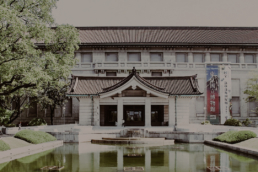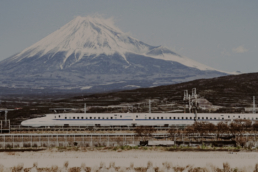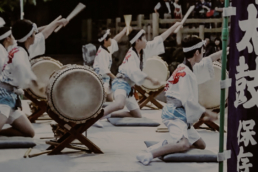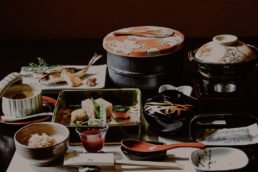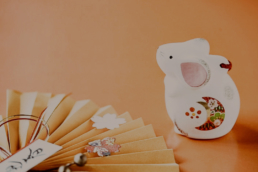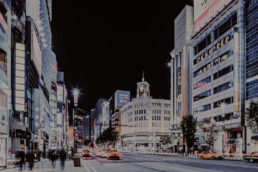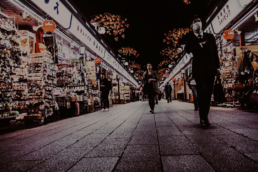Cose da fare in quarantena: Visitare virtualmente i musei del Giappone
Visitare ogni museo del Giappone, si può ma virtualmente
scritto da: Sara | fonte: Tokyo Weekender
La fase due qui in Italia è cominciata ma viaggiare è ancora impossibile, quindi continuiamo la nostra rubrica sulle cose da fare in quarantena e oggi vi parliamo di come visitare i musei del Giappone, virtualmente.
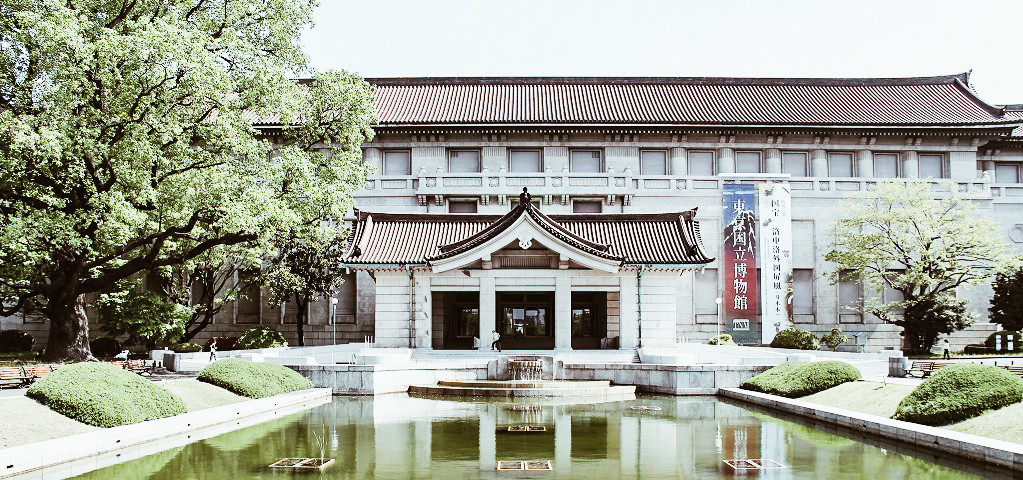
photo credits: https://enjoy.vivi.city/
In un attimo siamo stati travolti da un nemico invisibile che ha inevitabilmente stravolto le vite di tutti, in tutto il mondo. La diffusione del nuovo coronavirus e la pandemia che ne è seguita ha purtroppo portato alla chiusura di moltissimi settori economici, ma anche luoghi di interesse culturale.
Le situazioni sono le più svariate e noi di Japan Italy Bridge vogliamo cercare di non condividere tristezze, ma di concedere delle piccole parentesi di svago a tutti i nostri lettori. Infatti, nonostante il COVID-19 abbia profondamente colpito tutti, la nostra missione resta quella di portarvi in viaggio con noi tra le meraviglie del Sol Levante.
Abbracciando lo slogan #stayathome, l’hashtag che si è diffuso in questi mesi, e grazie a Google Art And Culture e ad altre iniziative individuali, anche il Giappone ha aperto le porte virtuali dei suoi meravigliosi musei e mostre, consentendoci di visitarli comodamente dal salotto di casa nostra! L’elenco è davvero lunghissimo, ma noi abbiamo selezionato i nostri preferiti. Cosa ne dite quindi di distrarci un po’ e iniziare questo itinerario virtuale? Tra Arte, moda, ceramica e storia: che il viaggio abbia inizio!
Chihiro Art Museum
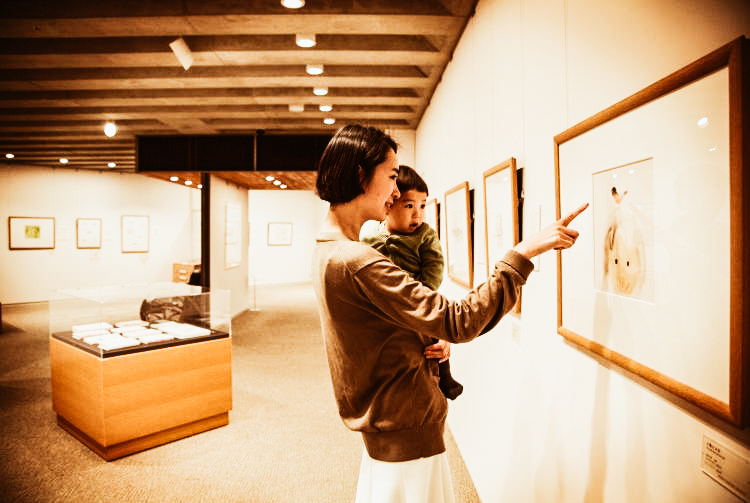
photo credits: gotokyo.org
Il Chihiro Art Museum di Tokyo fu istituito nel 1977 in onore dell'artista Chihiro Iwasaki (1918-1974), famoso per le sue delicate illustrazione color pastello per bambini. Oggi questo museo accoglie anche mostre che esibiscono opere di altri illustratori da tutto il mondo.
Fukuoka Art Museum
Aperto nel 1979, il Fukuoka Art Museum offre una collezione di 16.000 opere: utensili da tè, arte buddista, dipinti non solo locali ma anche famosi quadri di Dalì, Mirò e Chagall.
Fukuoka City Museum
L'arte asiatica assume un fascino e un'originalità che nessun altro museo al mondo riuscirà mai ad offrire. Infatti, al Fukuoka City Museum troviamo opere di artisti che "superano" lo standard per dare vita ad un' Asia "contemporanea".
Il museo della Keio University Library
L'università di Keio è sempre stata una delle più importanti del Giappone e la sua biblioteca include collezioni di inestimabile valore, come la Bibbia di Gutenberg, ukiyo-e e oltre 10.000 rare edizioni costituite da manoscritti e lettere scritte da personaggi di spicco della storia.
Kyoto National Museum
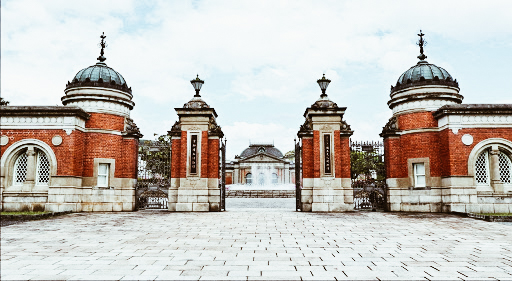
photo credits: intk-token.it
Il Kyoto National Museum fu aperto nel 1897 con il nome di Museo Imperiale di Kyoto. Nel 2014, il museo ha aperto una nuova ala, l'Heisei Chishinkan, per ospitare mostre delle sue vaste collezioni, che comprendono oltre 12.500 opere d'arte tradizionale giapponese.
Tokyo National Museum
Il Tokyo National Museum espone una vasta collezione di opere d'arte e antichità dal Giappone dalle antiche ceramiche alle stampe del periodo Edo e opere provenienti da altri paesi asiatici.
The Kyoto Costume Institute
La moda giapponese ha sempre influenzato il mondo e il Kyoto Costume Institute (KCI) raccoglie e conserva sistematicamente esempi eccezionali di abbigliamento occidentale attraverso secoli.
Nagasaki Atomic Bomb Museum
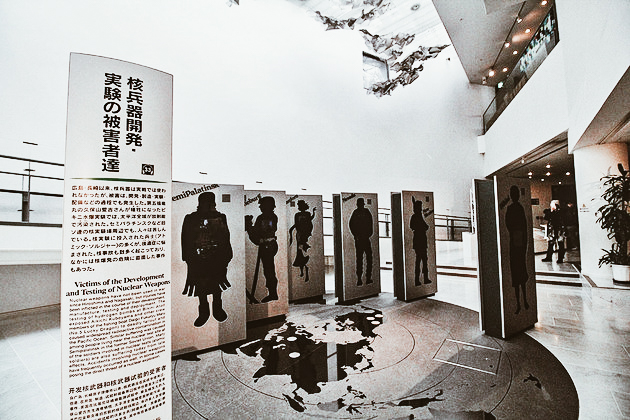
photo credits: shoreexcursions.asia
C'è davvero poco da raccontare per il Nagasaki Atomic Bomb Museum. Questo museo è stato istituito per non dimenticare ciò che accadde quel 9 agosto 1945, alle 11:02 quando tutti gli orologi si fermarono, visitarlo è tremendamente emozionante.
The Museum of Oriental Ceramics, Osaka
Fondato nel novembre 1982, il Museum of Oriental Ceramics, Osaka comprende circa mille pezzi di cinese e ceramiche coreane oltre ad opere della collezione Rhee Byung-Chang e opere firmate da Hamada Shoji.
Sagawa Art Museum
Inaugurato nel marzo 1998, il Sagawa Art Museum offre al pubblico le opera di artisti giapponesicome Ikuo Hirayama, Churyo Sato e Raku Kichizaemon XV
Museum of the Sakitama Ancient Burial Mounds
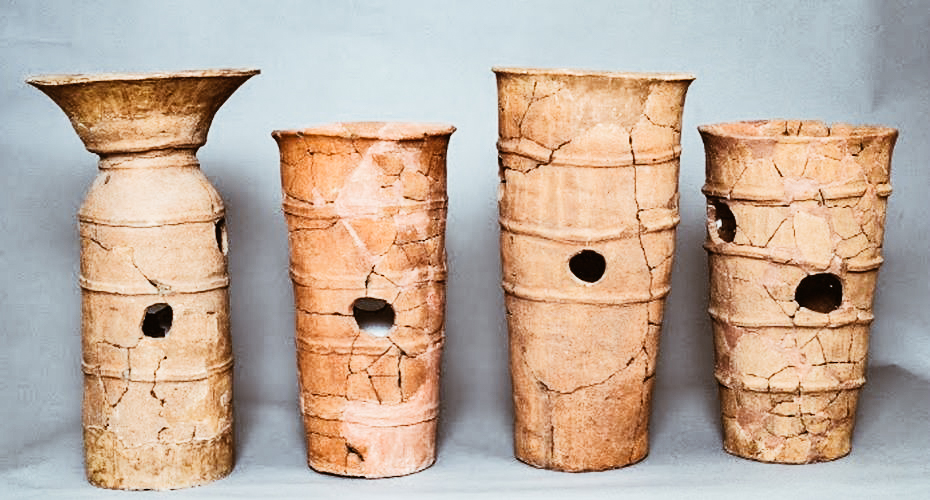
photo credits: smarthistory.org
Nel Museum of Sakitama Ancient Burial Mounds troviamo una raccolta di manufatti, divenuti poi tesori nazionali. Infatti, nelle stanze di questo musoe vediamo risorse estremamente preziose nel comprendere l'antica storia del Giappone.
Se pensate che non sia ancora abbastanza e sentite il desiderio di camminare virtualmente per le città del Giappone, oggi è possibile! Infatti Visitare i palazzi e le vie del Sol Levante diventa facile grazie a Google Street View. Qui milioni di immagini panoramiche assolutamente mozzafiato che vi faranno sognare e vi trasporteranno oltre qualunque confine geografico!
Travel guide: Tokyo - Episode 06 - gli Shinkansen del futuro
Tokyo – Osaka in un’ora con gli Shinkansen del futuro
scritto da: Sara | fonte: TimeOut Tokyo
Continuiamo con le nostre guide pratiche di Tokyo e oggi parliamo del sistema ferroviario giapponese, uno dei più efficienti al mondo, e del gioiello di questo sistema: gli shinkansen.
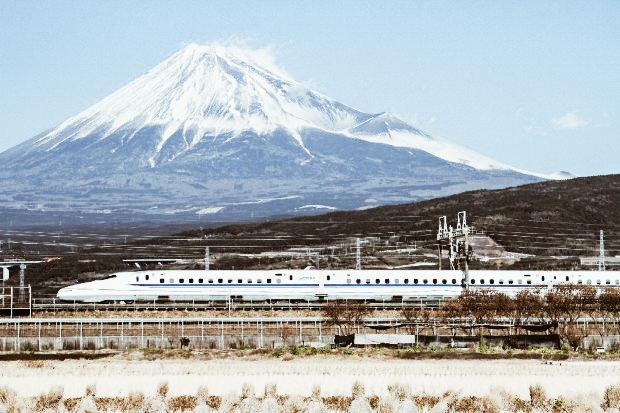
photo credits: repubblica.it
Parte integrante e caratteristica delle infrastrutture giapponesi, gli shinkansen (新幹線) sono quei treni definiti “proiettili”. Essi viaggiano velocissimi fino a raggiungere i 320 km/h, per portarci da una città all’altra in pochissimo tempo.
Le linee dello Shinkansen
Attualmente le linee conosciute che ci permettono di viaggiare verso diverse destinazioni in Giappone sono 15. Da Tokyo verso sud abbiamo la linea Tokaido Shinkansen, che collega la capitale con Osaka. La linea Sanyo Shinkansen collega Osaka a Fukuoka, mentre la linea Kyushu Shinkansen da Fukuoka attraversa l’isola di Kyushu da nord a sud. Da Tokyo partono anche le linee Shinkansen Akita, Hokkaido, Hokuriku, Joetsu, Tōhoku e Yamagata.
La sfida del Sol Levante è sempre costante: offrire sicurezza e massima efficienza.
Nel 2015, Japan Railways Group (JR) è riuscita a battere il record mondiale di velocità ferroviaria con il treno a levitazione magnetica che ha raggiunto il 603 km/h. Da qui si è via via sviluppato un programma che potremmo definire futuristico per mantenere questo impressionante record. Parliamo infatti della tratta Tokyo-Nagoya-Osaka. Questa nuova iniziativa prende il nome di Linear Project e dovrebbe essere completata nel 2037.
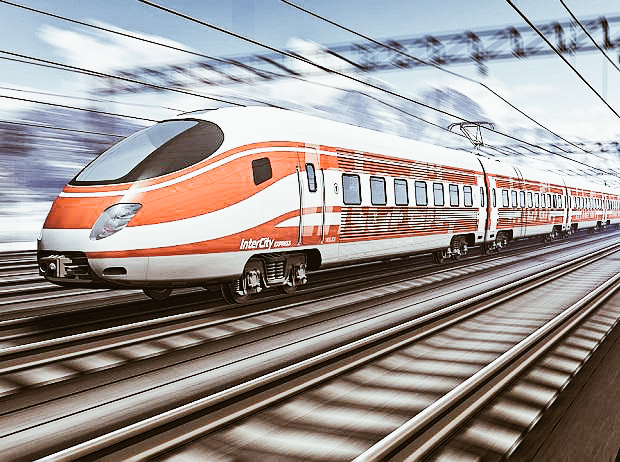
photo credits: business-standard.com
I treni del futuro
La Japan Railways da sempre si impegna nell’implementazione di treni ultra moderni. Infatti, ora si sta concentrando sulla realizzazione di una Shinkansen lineare capace di viaggiare a levitazione magnetica. Questo tipo di tecnologia avrebbe ruote retrattili che non toccano i binari facendo si che il treno possa elegantemente “scivolare” senza alcun attrito. Questo shinkansen del futuro viaggerebbe ad una velocità massima di 500 km/h, portandoci da Tokyo a Nagoya in 40 minuti e da Tokyo ad Osaka in 67 minuti.

photo credits: agatetravel.com
Naturalmente questo progetto richiede nuove infrastrutture che permetta un collegamento da Tokyo a Nagoya per la maggior parte sotterraneo. Infatti, questo permetterebbe di evitare zone soggette a forti scosse di terremoto. Con costi che si aggirerebbero attorno ai 50 miliardi e mezzo, la prima parte della rotta potrebbe essere già completata nel 2027. Insomma, non ci resta che attendere e seguire gli sviluppi.
Voi cosa ne pensate del viaggiare ad alta velocità? Questi treni così futuristici ormai sono parte della nostra realtà e lo shinkansen ha un fascino incredibile: avete avuto modo di provarlo? Raccontateci le vostre esperienze!
Travel guide: Tokyo - Episode 05 - Affitti a Tokyo
Gli affitti più economici a Tokyo
scritto da: Sara | fonte: Soranews24
Continuiamo con le nostre guide pratiche di Tokyo con un focus sugli appartamenti più economici che si possono trovare in città.
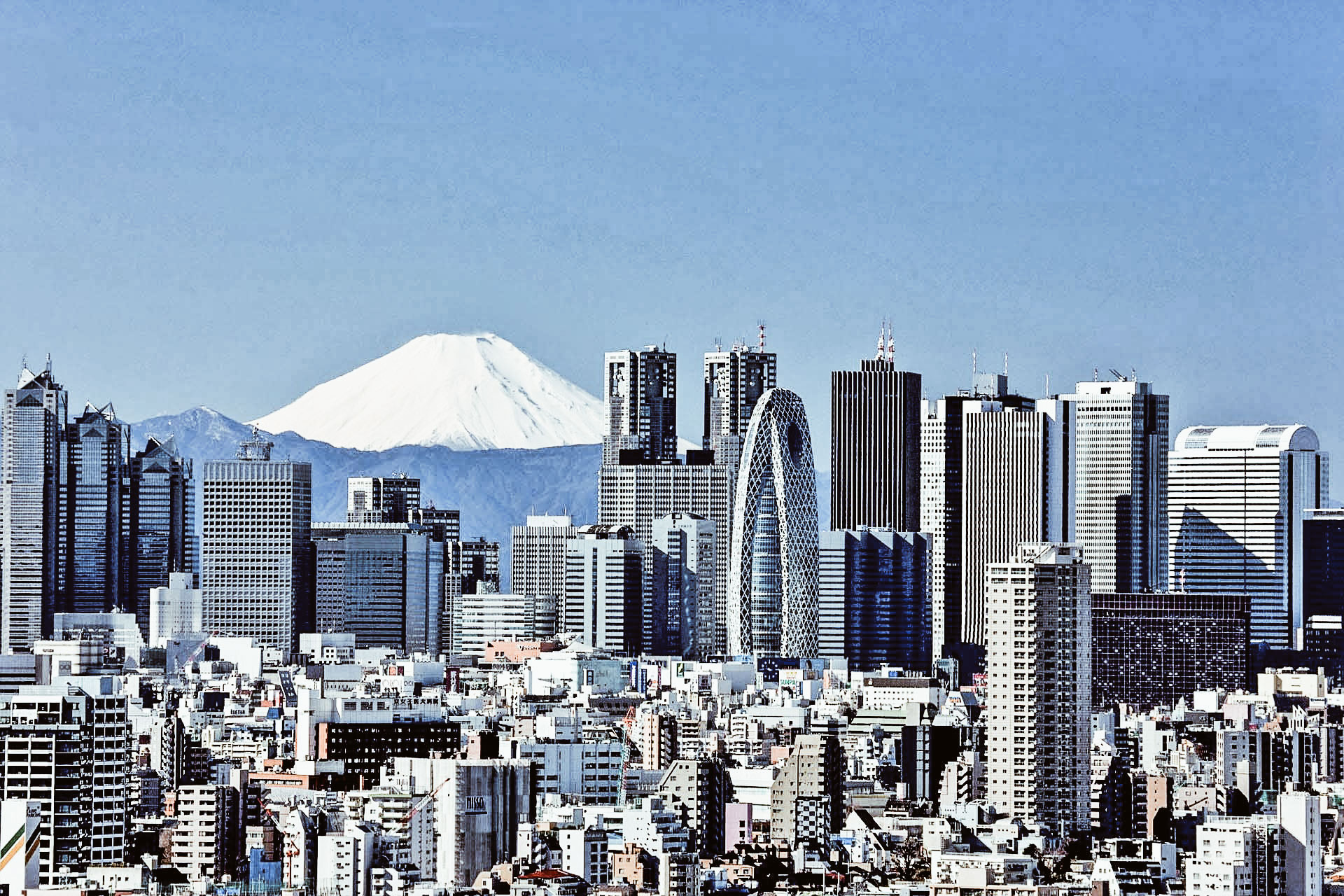
photo credits: tgcom24
Quante volte abbiamo pensato “Se andassi all’estero per cercare delle nuove opportunità?” e al contempo la paura dei prezzi proibitivi degli appartamenti ci ha frenato dal realizzare questa intenzione?
Oggi inseguire le proprie aspirazioni è possibile! Se state pensando a Tokyo come meta sappiate che non c’è nulla di proibitivo. Piccoli appartamenti a prezzi mensili convenienti vi permetteranno di iniziare una nuova vita in questa meravigliosa megalopoli.

photo credits: facebook.com/suumo.jp
L’agenzia immobiliare giapponese Suumo ha pubblicato il risultato di uno studio che dimostra la convenienza delle tariffe di locazione delle grandi città del Sol Levante. Naturalmente gli appartamenti presi in considerazione sono monolocali compresi tra i 10 e i 40 mq e non sono situati al centro della città. In questa zona infatti, come sappiamo, troviamo gli uffici, le attività commerciali insieme alle residenze multi piano più lussuose. Tuttavia, grazie alla vicinanza alle stazioni o metropolitane che permettono di spostarsi agevolmente e raggiungere qualunque meta, anche le zone esterne diventano importanti opzioni da tenere in considerazione!
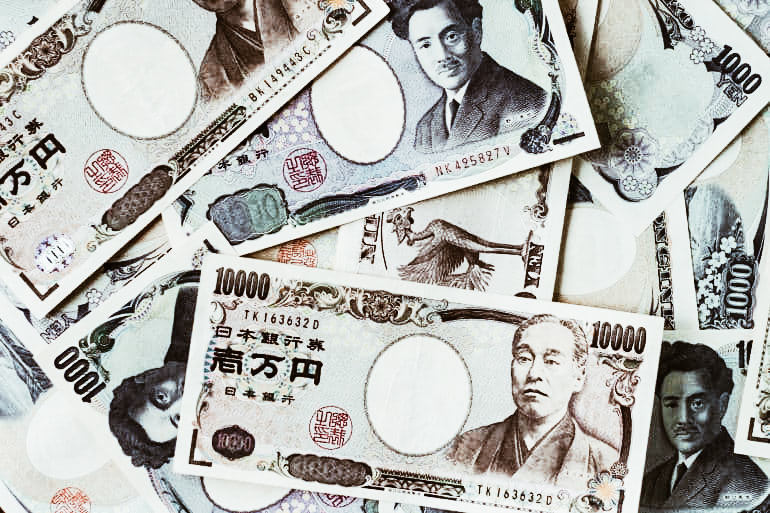
photo credits: Japanexperterna.se
Le zone residenziali più convenienti
Il risultato della ricerca di Suumo è stata il seguente:
59,000 yen al mese nei pressi di Kasai Rinkai Koen Station (JR Keiyo Line). A soli 14 minuti di treno dalla stazione di Tokyo e con un unico trasferimento lungo la strada alla linea della metropolitana di Hibiya si possono raggiungere Akihabara, Tsukiji, Ginza o Roppongi.
60,000 yen al mese nei pressi di Kanamachi Station (JR Joban Line), dallla quale si può raggiungere Ueno e Keisei Kanamachi (Keisei Kanamachi Line).
62,000 yen al mese nei pressi di Kita Ayase Station (Tokyo Metro Chiyoda Line), che conduce ad Harajuku e Shinozaki Station (Toei Subway Shinjuku Line), che, come suggerisce il nome ci catapulta direttamente a Shinjuku.
63,000 yen al mese nei pressi di Funabori Station (Toei Subway Shinjuku Line), Horikiri Shobuen Station (Keisei Main Line), Ichinoe Station (Toei Subway Shinjuku Line), Keisei Tateishi Station (Keisei Oshiage Line), Shibamata Station (Keisei Kanamachi Line) e Takenotsuka Station (Tobu Isesaki Line/Tobu Skytree Line).
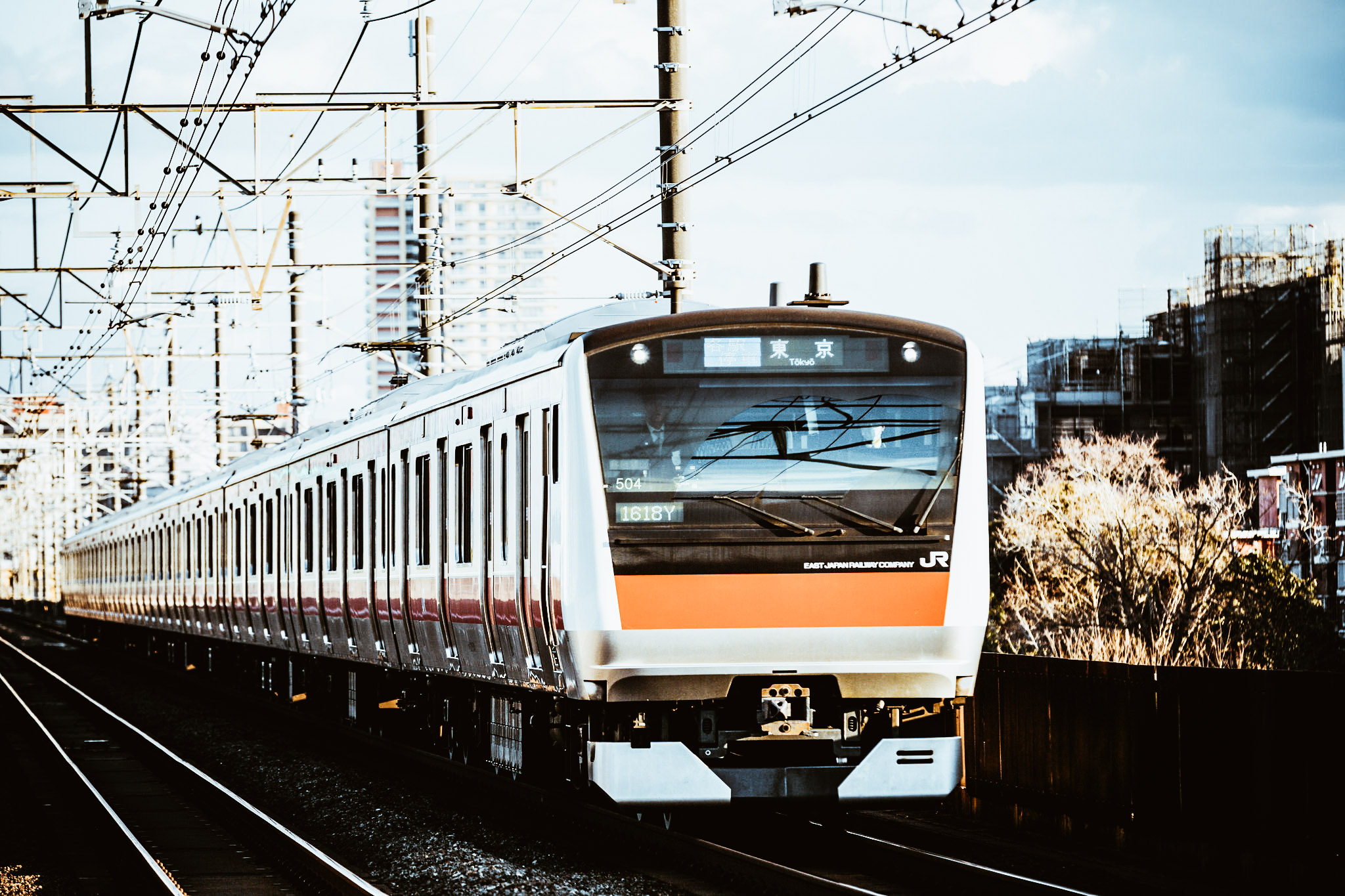
photo credits: hansjohnson
Non vi sentite rincuorati? Quella sensazione di poter dire: “allora posso realizzare il mio sogno se volessi?”?
Non c’è davvero nulla di irraggiungibile se sappiamo cogliere l’occasione giusta.
Atsuta Matsuri, lanterne e fuochi artificiali
Tanti sono i matsuri giapponesi ma oggi decidiamo di concentrarci sull'Atsuta Matsuri, nella prefettura di Aichi.
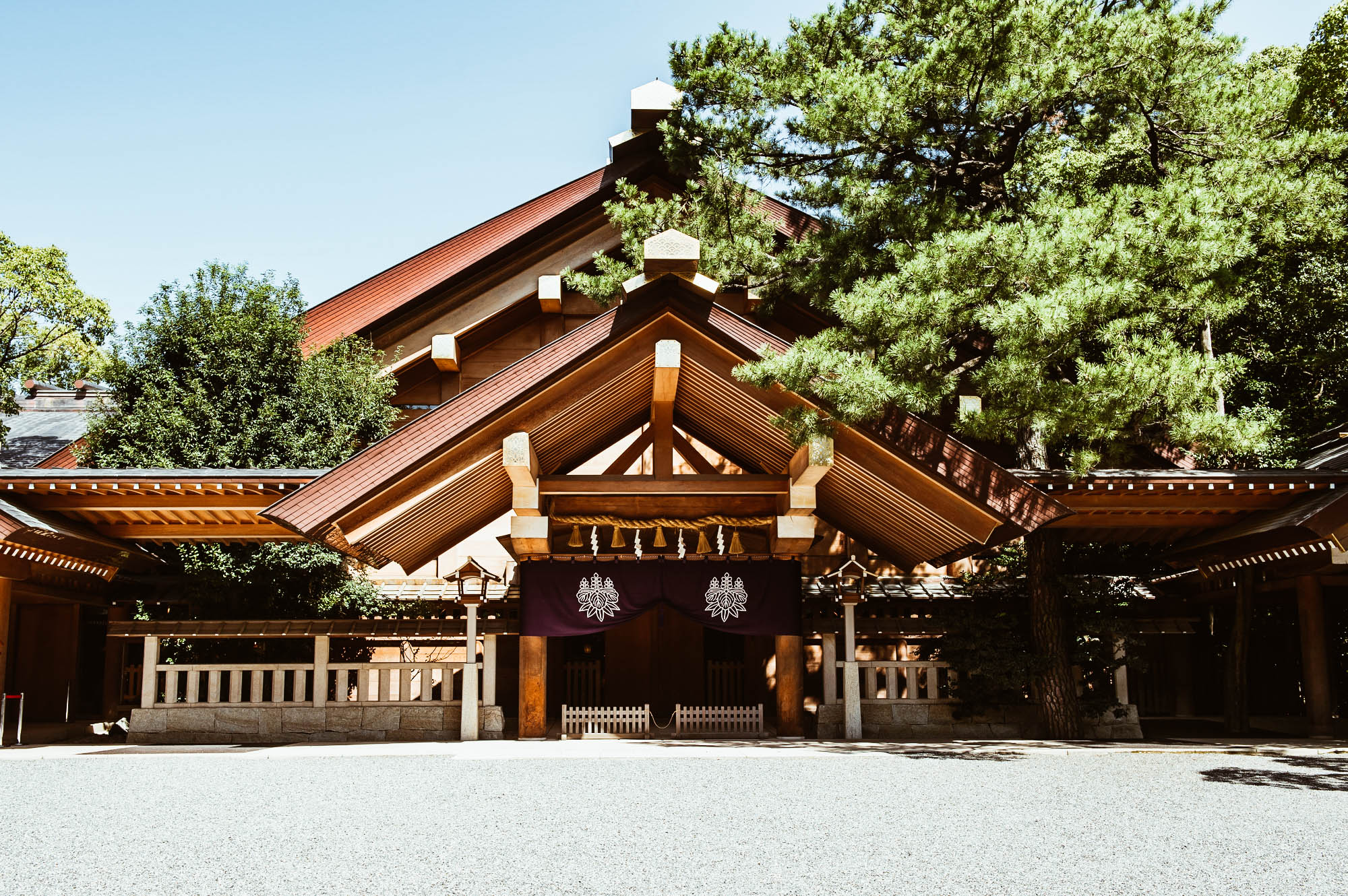
photo credits: thegate12.com
Nella regione di Chubu, più precisamente a Nagoya nella prefettura di Aichi, se ci addentriamo nella città, nascosto tra secolari cipressi, scopriremo uno dei santuari più sacri del Giappone: l’Atsuta Jingu. Venerato sin dall’antichità con i suoi 1900 anni, si ritiene sia la casa della Sacra Spada Kusanagi dell'Imperatore, una delle tre insegne imperiali.
In questo luogo magico, ogni anno, il 5 giugno si tiene l’Atsuta Matsuri (諸ブー祭), meglio conosciuto come Shobu-sai.
La giornata dell'Atsuta Matsuri
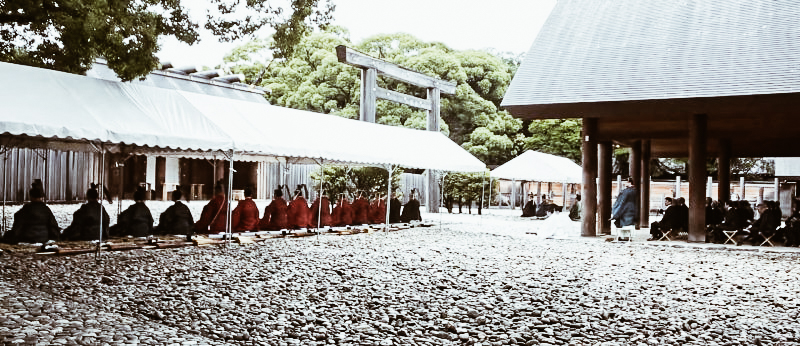
photo credits: kawaii-aichi.jp
Attorno alle 10:00 del mattino i festeggiamenti iniziano con una cerimonia speciale in cui un messaggero imperiale viene inviato al santuario per offrire le goheimotsu. Queste infatti sono strisce di carta bianca per i rituali shintoisti e che servono a celebrare una cerimonia speciale dedicata agli dei e alle dee dell’Atsuta Jingu. Dopodichè questo splendido e caratteristico Matsuri ospita vari spettacoli tra i recinti del Santuario.
Gli spettacoli
Gli spettacoli durante questo festival sono molti e di vario tipo, fra cui Il kyudo, tiro con l'arco in stile giapponese e il kendo, scherma giapponese. Ma il vero protagonista è l’Atsuta-kagura, un tipo di danza shintoista tradizionale locale accompagnata da flauti e dai taiko, i tipici tamburi giapponesi. Oltre a questo, troviamo varie esibizioni fra cui il Sumo e competizioni di intrattenimento come il Kodomo Mikoshi, i santuari portatili per bambini!


photo credits: kawaii-aichi.jp, goinjapanesque.com
Il Festival raggiunge il culmine del fascino quando, alle 18:00, i cinque makiwara kento, enormi altari allegorici decorati da 365 lanterne ciascuno, sono sistemati accanto agli ingressi delle tre porte torii del santuario e vengono illuminati. Naturalmente non mancano le bancarelle che offrono tipicità e souvenirs di ogni genere.
Il chiacchiericcio delle persone si arresta alle 21:00 al parco Jingu Koen quando uno stupendo spettacolo pirotecnico fa alzare le teste al cielo e riempie gli occhi di luci e colori.


photo credits: goinjapanesque.com
Il festival di Atsuta è il più grande festival tra i circa 70 eventi che si tengono al Santuario di Atsuta ogni anno.
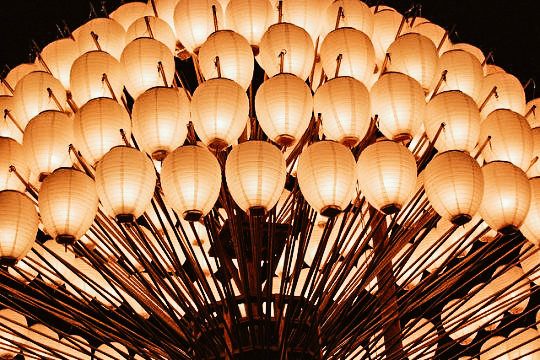
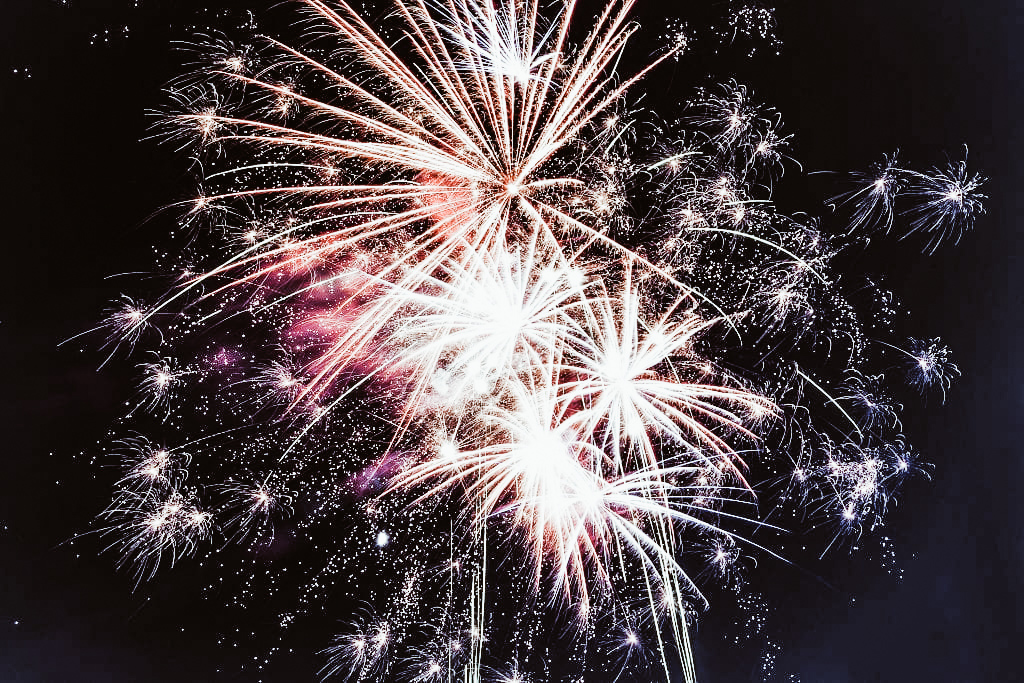
photo credits: nagmag.jp, kichijapan.com
Se vi trovate nei dintorni, non perdete questi magici spettacoli di lanterne e fuochi d'artificio per trascorrere una giornata divertente all’insegna della tradizione! Come ogni festival la partecipazione è gratuita. Per ogni informazione su come raggiungere la location, visitate il sito ufficiale del Santuario in inglese.
Travel guide: Tokyo - Episode 04 - Colazione a Tokyo
La colazione è il pasto più importante della giornata e questa regola vale anche a Tokyo! Oggi per il nuovo post dedicato alle nostre guide pratiche vi parliamo dei posti migliori dove fare colazione a Tokyo.

photo credits: oyakata.com.pl
La tipica colazione a Tokyo e in Giappone
Quando si parla di “prima colazione”, ognuno di noi ha idee differenti in base alle proprie abitudini: dolce, salata, proteica.
Recentemente io, abituata ai frullati di frutta fresca e avena ogni mattina, mi sono detta: “Se abitassi a Tokyo e volessi provare le tradizioni giapponesi, cosa potrei mangiare a colazione?”
Per fortuna anche in Giappone la colazione è considerata da lungo tempo come il pasto più importante della giornata ed è preparata e consumata a casa. La tradizionale colazione del Sol Levante si basa sul concetto di ichiju-sansai (一汁三菜 = una zuppa, 3 piatti). I piatti principali sono Gohan (ご飯) , una ciotola di riso al vapore, Shiru (汁) una ciotola di zuppa, Okazu (おかず) il piatto principale e Kouno mono (香の物) un piccolo piatto di verdure di stagione in salamoia.
Hatsufuji a Nihonbashi

photo credits: timeout.com
Questa è una tappa amata da tutto coloro che si recano in ufficio ogni mattina. Hatsufuji a Nihonbashi è un ristorante in cui, attraverso una semplice macchinetta, si può ordinare un completo set di piatti da colazione tra le 7:00 e 11:00 della mattina.
Tsumugi a Tsukiji

photo credits: favy-jp.com
Parte del centro informazioni dell’antichissimo Tempio Tsukiji Hongan, Tsumuji offre un piccolo negozio e uno spazioso cafè dall’atmosfera calda e rilassante. La colazione, servita fino alle 11, offre la possibilità di scegliere tra due menu. La prima scelta è il tradizionale set che comprende pesce grigliato, verdura agrodolce, tamagoyaki, riso e zuppa di miso, il muesli con i crackers di riso e frutta fresca.
In alternativa, lo spettacolare 18 Hinmoku No Asagohan che comprende ben 18 piatti! Ispirato agli insegnamenti dei 48 grandi voti di Amitabha Buddha, esso comprende: porridge di riso, zuppa di miso e 16 piccoli piatti stagionali, come l'anatra con pepe sansho, konnyaku shiroae, tamagoyaki, tofu con pasta di fagioli bianchi, yuzu e gelatina di matcha.
Tsukiji Sushi Sei a Marunouchi
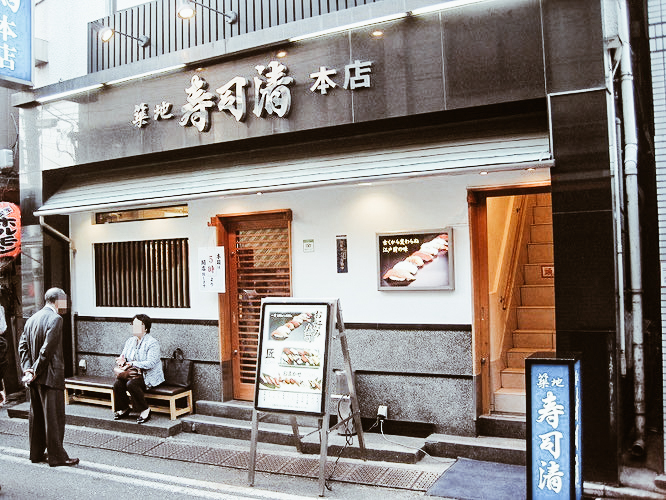
photo credits: picrumb.com
Percorrendo la stazione di Tokyo, nel settore del GranSta Dining, ci si imbatte nel Tsukiji Sushi Sei. Qui la colazione, servita dalle 7 alle 10, prevede un piatto speciale. Parliamo infatti del tai goma (dentice affettato al sesamo) e tante altre varianti come pesce brasato con pancetta di salmone e ikura. Ogni porzione è rigorosamente accompagnata da una ciotola di riso, zuppa di miso, tamagoyaki e verdura agrodolce.
Shinpachi Shokudo a Shinjuku
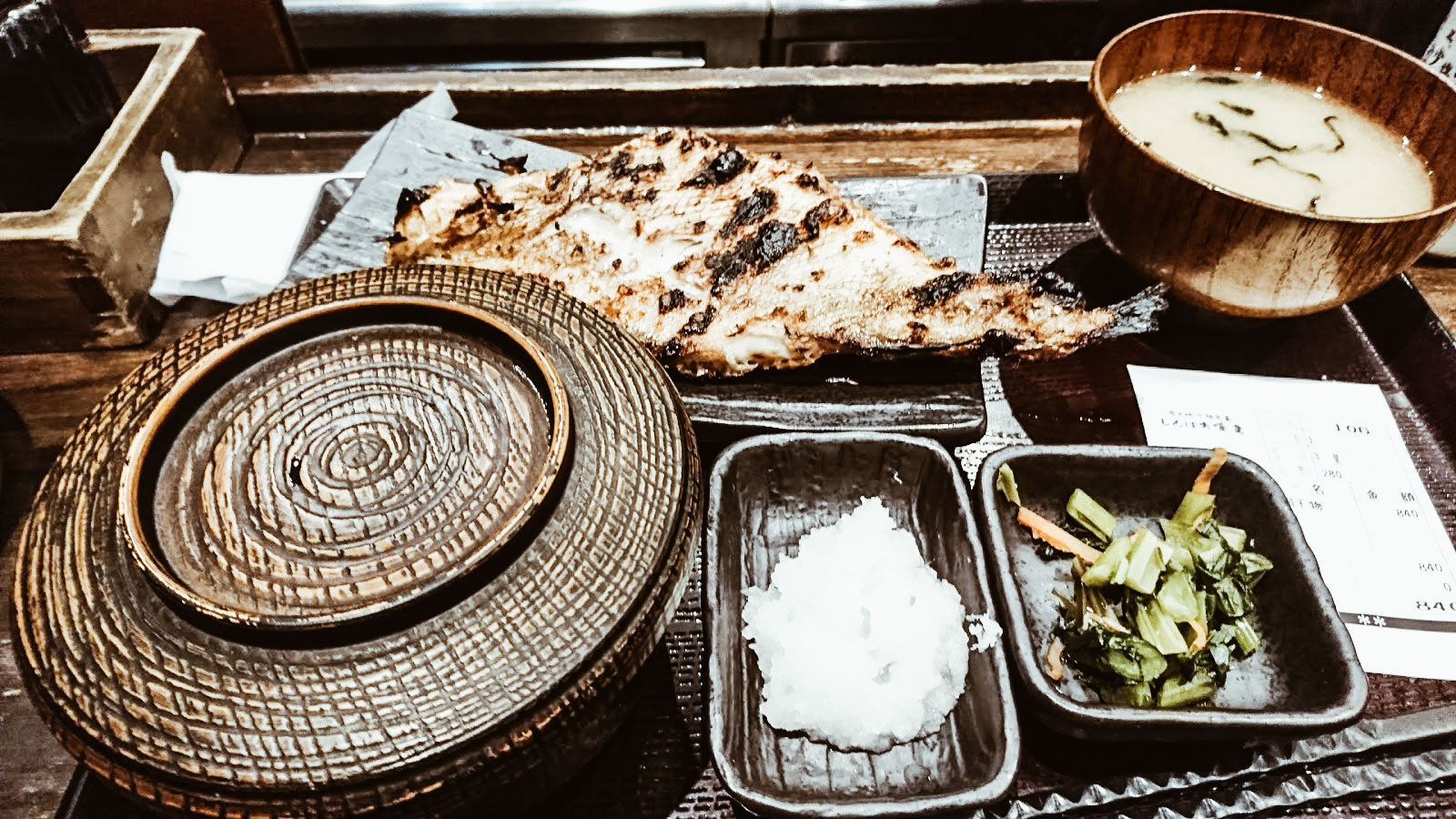
photo credits: tripifyapp.com
La frenesia mattutina dei giapponesi la si può vivere in questo particolare locale situato tra le vie secondarie di Shinjuku. Ispirato ad una rustica fattoria, il bancone a ferro di cavallo garantisce un servizio veloce e del cibo gustoso. Qui la colazione comprende sgombro, saikyo alla griglia, salmone marinato e goma-aji.
Odashi Tokyo a Shinagawa
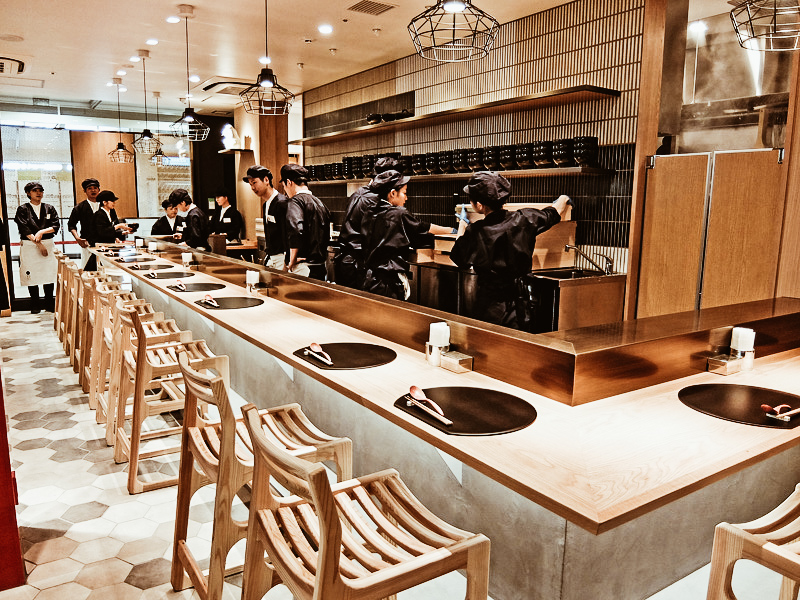
photo credits: ryutsuu.biz
Odashi appartiene ad una catena e come tale offre un menu fisso e piccole aggiunte extra che si possono scegliere tra varie offerte. La colazione, servita tra le 7 e le 10, comprende: zuppa di miso all'aragosta, maiale e spinaci in brodo di latte di soia allo zenzero, congee di pollo, radice di loto e congee cinesi di zucca. Questi sono tutti piatti ai quali si può aggiungere tofu, brodo con maiale e patate e zuppa di saikyo miso.
Quale tra questi locali tradizioni vi hanno incuriosito? Avete già trovato il vostro preferito o conoscete altri fantastici posticini da suggerirci? Una cosa è certa: anche la colazione a Tokyo è un’esperienza straordinaria!
2020, l'anno del topo
Siamo nel 2020 ed è ufficialmente scoccata l’ora dell’anno del topo. Vi siete mai chiesti perchè in Giappone, allo scoccare di ogni nuovo anno, viene annunciato il nome di un animale? Ad esempio “l’anno del montone” o “l’anno del bue” e così via?
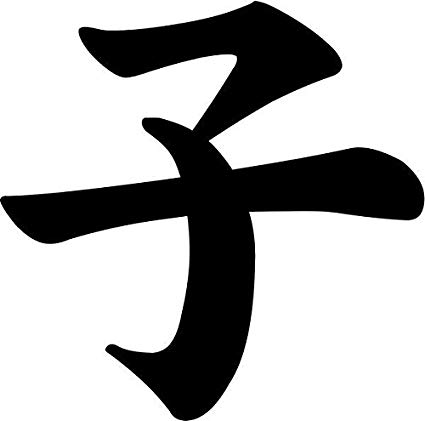
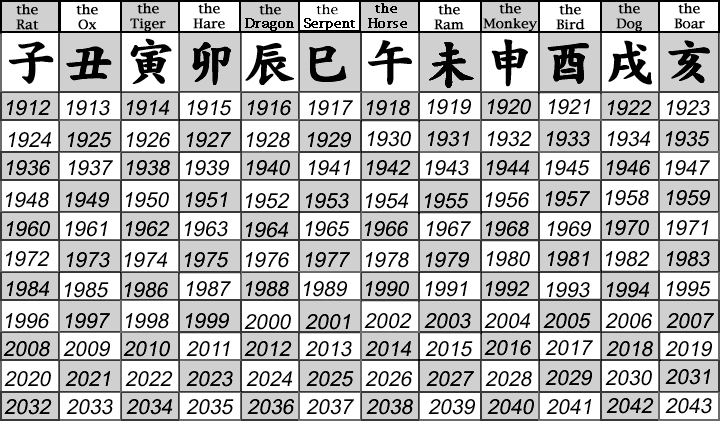
photo credits: amazon.com , https://tokyo5.files.wordpress.com
Questa usanza prende origine dallo zodiaco cinese, che diversamente dalla nostra tradizione, non si basa sul mese di nascita, ma bensì sull’anno! Perciò ad ogni anno corrisponde uno dei 12 animali dell’oroscopo: Topo, bue, tigre, coniglio, drago, serpente, cavallo, montone, scimmia, gallo, cane e cinghiale.
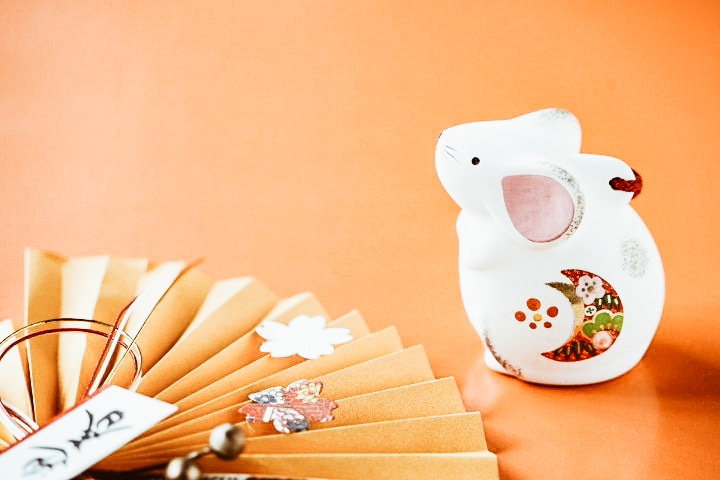
photo credits: pinterest.it
L’astrologia ha sempre affascinato tutti, anche i più scettici. Il 2020 è l’anno del Topo, il primo dei 12 segni, caratterizzato dalla positività e dall’energia. Infatti, se la sua influenza sarà quella promessa, questo nuovo anno dovrebbe vedere l’evoluzione o l’avvio di nuovi progetti, promettendo succosi frutti a coloro che lavorano duramente.
Inoltre, famose astrologhe come Jessica Adams e Cathryn Moe affermano che ci aspettano 366 giorni in cui sarà “l’unione a fare la forza”. In questo nuovo anno, nessuno dovrebbe affrontare le grandi sfide da solo, ma unirsi per raggiungere l’obiettivo. Di conseguenza “condivisione di potere” sarà una delle parole chiave.
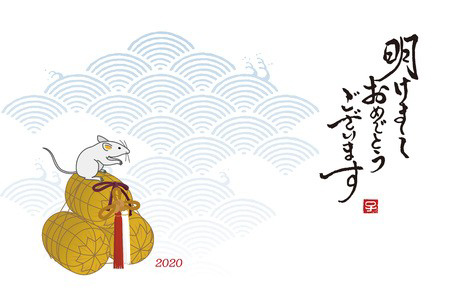

photo credits: pinterest.it
Potremmo assistere ad un processo evolutivo su scala mondiale, in cui le persone potrebbero arrivare a comprendersi e collaborare per il bene collettivo. Questo avrebbe grandi ripercussioni positive sul piano sociale.
Il topo rappresenta quella parte della psiche più oscura in cui il vero “io” si esprime. Cadranno le maschere che fino ad ora ci hanno circondato. Questo comporterebbe una maggiore compassione e comprensione anche verso il nostro stesso Pianeta (ci basti pensare alla lotta per cambiamenti climatici).
Una nuova energia dentro di noi libererà tutta la sua potenza. E voi? Siete pronti ad affrontare questa rivoluzione regalata dall'anno del topo?
Travel guide: Tokyo - Episode 03 - I migliori posti per alloggiare a Tokyo
Trovare un alloggio a Tokyo è estremamente semplice poiché la città offre tipologie che si adattano alle esigenze di tutti. Che si tratti di un lussuoso hotel, un albergo per famiglie, un ryokan, la nuovissima moda delle capsule, oppure qualcosa di più economico Tokyo offre di tutto. Tuttavia, ciò che fa veramente la differenza è il quartiere. Come abbiamo visto nei nostri blog, ognuno di essi propone spaccati di una società complessa e affascinante, caratterizzati da storia, cultura, modernità, tecnologia e molto altro.
Per questo episodio dedicato alle nostre guide pratiche, abbiamo deciso di proporvi e raccogliere una lista di quelle che per noi sono le aree migliori dove soggiornare a Tokyo in base agli interessi e alle loro più spiccate caratteristiche.
Indietro nel tempo: Asakusa, a tutto Edo!
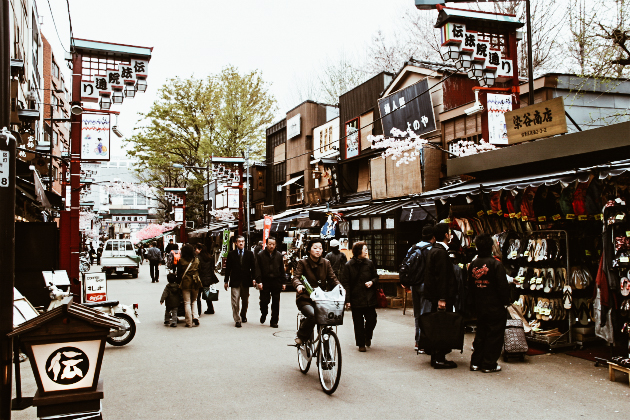
photo credits: ar.jal.co.jp
Asakusa, con le sue pittoresche stradine, offre storia e cultura senza precedenti. Questo quartiere permette ai suoi visitatori di immergersi in quello che era la vecchia Tokyo del periodo Edo. Ristoranti tradizionali, locande e negozi dove si possono trovare souvenirs artigianali fanno da contorno. Il fulcro è il tempio Sensōji, dedicato a Kannon Sama, la dea buddista della misericordia, luogo di venerazione più antico di Tokyo.
Fascino a grandi altezze: il romanticismo di Ebisu
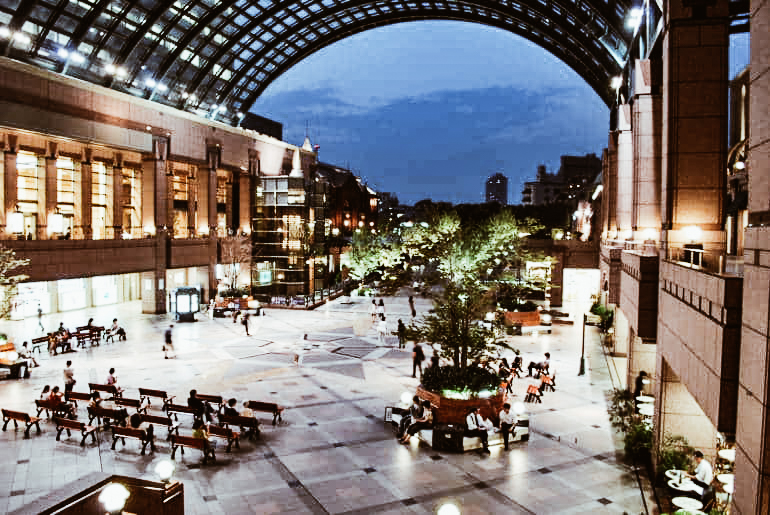
photo credits: tokyocheapo.com
Una delle stazioni della Yamamote Line è Ebisu, quartiere di Shibuya con i suoi altissimi grattacieli. Qui troviamo anche lo Yebisu Garden Place, una torre dall’architettura europea, il cui ingresso è gratuito. Circondata da piazze e giardini, qui si può cenare in un ristorante che assomiglia ad un castello francese innamorandosi una vista mozzafiato su tutta Tokyo. Ad Ebisu si trova anche il grande magazzino Mitsukoshi, il Museo della Birra ed il Tokyo Photographic Art Museum.
Stravagante vita notturna : Roppongi & Shinjuku
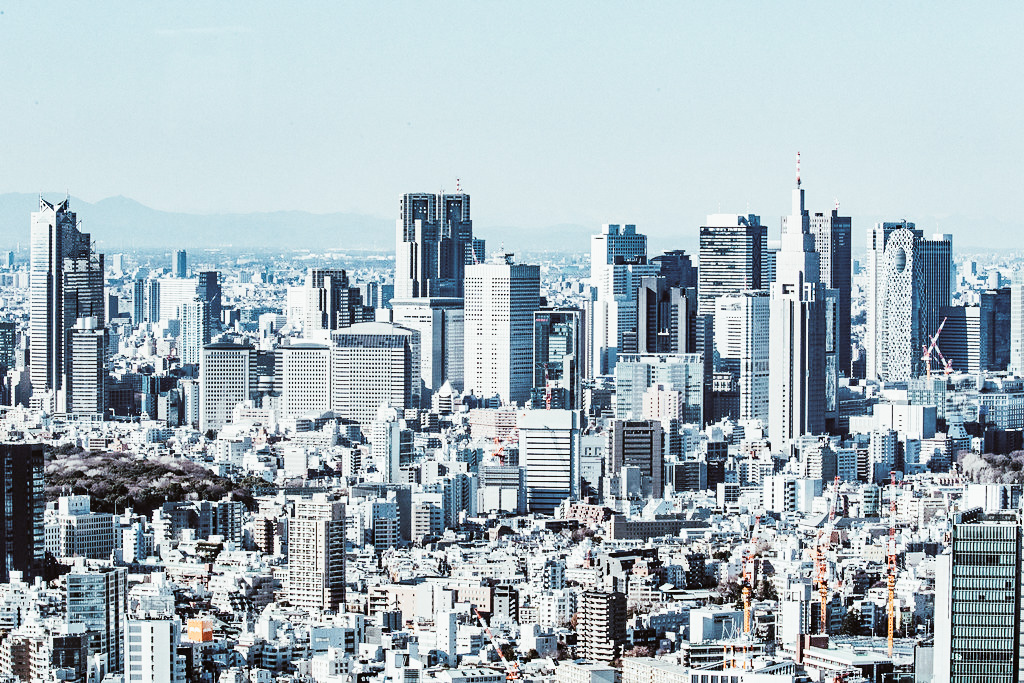
photo credits: flickriver.com
Roppongi è il quartiere che, per eccellenza, ospita bar, izakaya e ristoranti che offrono qualunque tipo di cucina. Roppongi è nota soprattutto per il Roppongi Hills un complesso gigantesco che comprende uffici, appartamenti, negozi, ristoranti. Ma anche sale cinematografiche, parchi, un museo, un hotel, uno studio televisivo e un anfiteatro all'aperto. Al al centro di tutta questa area sorge la Mori Tower, un edificio di 54 piani.
Ancora più “fuori dagli schemi” è Shinjuku, la cui vita notturna è vasta e in qualche modo anche perversa grazie a Kabukicho, il famosissimo quartiere a luci rosse e il Golden Gai, un labirinto di stradine fiancheggiate da un numero impressionante di piccolissimi bar.
Lontano dalla frenesia: Meguro
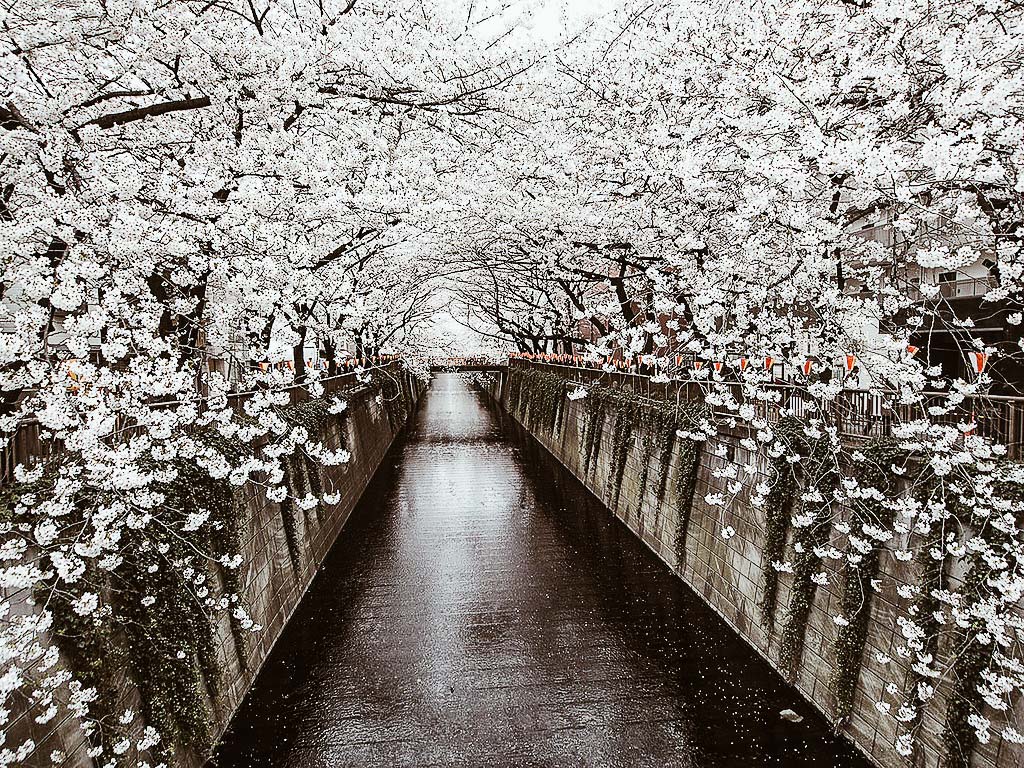
photo credits: realestate.co.jp
Prevalentemente residenziale, a Meguro la vita metropolitana si mette in pausa e l’atmosfera è hipster. Qui ci sono boutique uniche nel loro genere, eleganti caffè, ristoranti e negozi vintage. Tuttavia, ciò che la rende magica è tutta la zona alberata lungo il fiume Meguro. Qui in primavera gli alberi di ciliegio regalano a questo quartiere una tinta rosea ed estremamente rilassante in cui concedersi un pic-nic tradizionale.
I bambini ameranno Odaiba
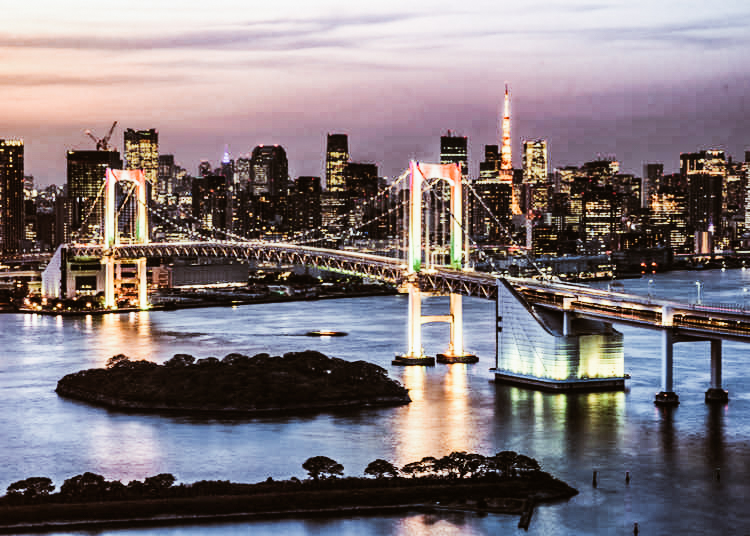
photo credits: livejapan.com
Non esiste luogo più indicato per le famiglie di Odaiba. Questa isola artificiale offre tanto intrattenimento per i bambini di tutte le età. Infatti, qui troviamo la Toyota Mega Web, il famoso museo Miraikan, Joypolis, Legoland e moltissimi centri commerciali, straripanti di ristoranti per ogni gusto.
Per i cultori del lusso e del cibo nulla è paragonabile a Ginza

photo credits: gotokyo.org
Non esiste quartiere noto per la propria area commerciale di lusso come Ginza. Qui possiamo trovare negozi famosi (e costosi), ma anche grandi magazzini che, nel seminterrato, ospitano negozi alimentari davvero unici. Inoltre, Ginza è famosissima anche per i suoi ristoranti che spaziano dall’alta cucina francese ai piatti fusion. Ma anche per piccoli izakaya e sofisticati cocktail lounge. Insomma, se amate bere e mangiare e volete dedicarvi al turismo gastronomico, questo è ciò che fa per voi!
Fashion, dinamismo e trasporti: Shibuya
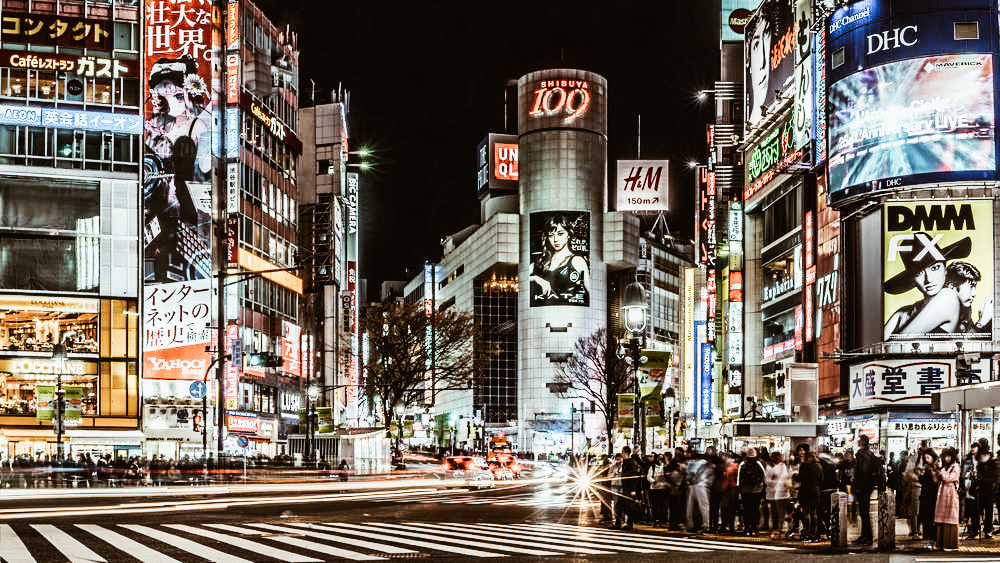
photo credits: photo-collection.geo.fr
Volete vivere la frenesia vera di Tokyo? Shibuya non vi deluderà! Questa infatti è una delle zone più dinamiche della città. Costantemente illuminata dai megaschermi che sono presenti su tutti i palazzi, è anche l’area più colorata e caratteristica grazie ai giovani che si dedicano all’arte del cosplay. Per non parlare delle mode ganguro (abbigliamento alternativo vistoso e kitsch) e kogal (abbigliamento e trucco sono vistosi e ispirati all’occidente, esasperando le nostre caratteristiche). Shibuya è uno dei maggiori nodi di trasporti del paese. Da qui, treni, metro e autostrade vi permetteranno di arrivare ovunque in ogni momento!
Dopo aver letto le offerte di ciascun quartiere, quali tra queste aree corrispondono alla vostra personalità? Cosa cercate per il vostro soggiorno a Tokyo? Scriveteci le vostre opinioni e raccontateci le vostre esperienze legate ad una delle città più belle al mondo!
Travel guide: Tokyo - Episode 02 - Shopping guide
Viaggiare è un’esperienza unica che ci permette di allargare il nostro bagaglio culturale e di venire a contatto con realtà più o meno distanti dalle nostre. Allo stesso modo però una della consuetudini più diffuse è quella di ritornare a casa portando con sé ricordi anche materiali.
Per questo motivo, in questo nuovo episodio delle nostre speciali guide, vogliamo indicarvi dove, come e cosa acquistare a Tokyo!
Non vogliamo alimentare in voi lo spirito del consumismo, ma bensì condurvi sulla strada degli acquisti unici, carini, utili, necessari, appaganti. Infatti, da che mondo è mondo, l’essere umano ha bisogno anche di sentirsi coccolato e di dedicarsi qualche spesa in più per il solo gusto di farlo.
Ecco quindi il nostro piccolo viaggio nel mondo dello shopping di Tokyo!
Passeggiando per Asakusa: Nakamise Dori

photo credits: thejapanesedreams.com
La Nakamise Dori è una delle strade pedonali più caratteristiche per lo shopping ad Asakusa. Fiancheggiata dalle numerosi bancarelle in cui è possibile trovare artigianato tradizionale souvenirs e snack, è una tappa perfetta per gli acquisti last minute. I negozi che costeggiano la via sono un vero paradiso per chi cerca la washi, la carta giapponese per gli origami.
Nel cuore di Shinjuku: Okadaya
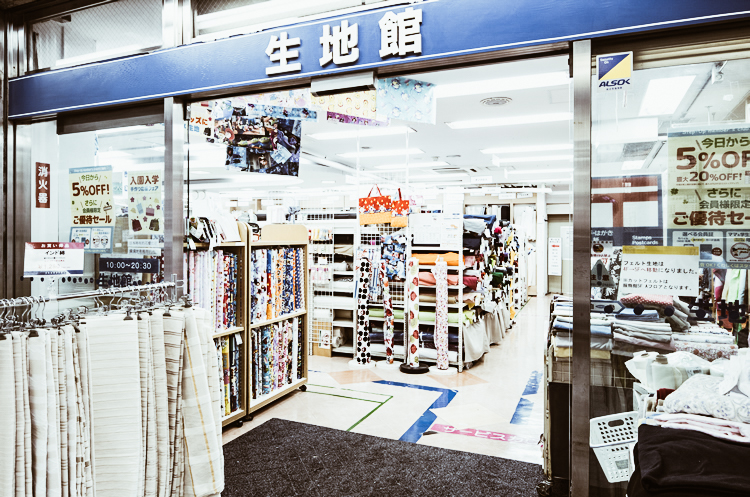
photo credits: shinjuku-guide.com
Il negozio di Okadaya mette a disposizione ben 6 piani di articoli per artigianato, filati, kit da cucito, libri-guida per il fai da te, fodere, materiali tradizionali giapponesi e altri tessuti particolari. Una meta molto amata dagli studenti che frequentano la scuola di design e moda poco distante!
Tutto a 100 Yen o poco più: Daiso
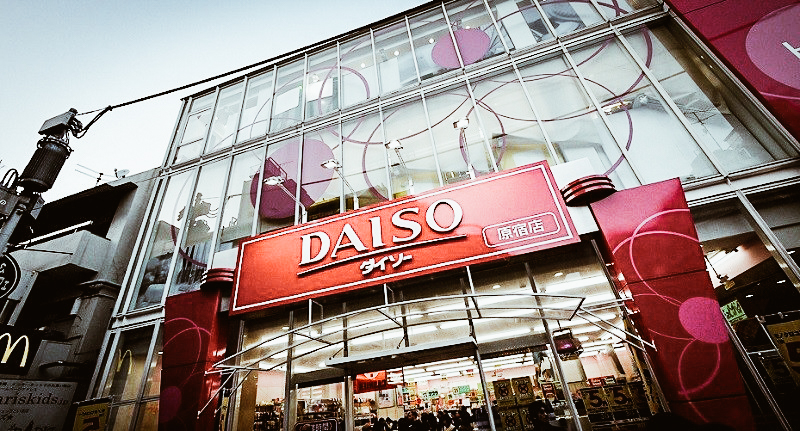
photo credits: planetyze.com
Daiso oggi è un marchio conosciuto in molti paesi nel mondo e sono presenti un sacco di negozi in tutto il Giappone. A Tokyo è il posto ideale per spendere poco e trovare un tantissimi oggetti più o meno utili, carini, divertenti, particolari e così via che. Nonostante il costo estremamente basso, sono di una sorprendente qualità!
Cuteness overload: Aranzi Aronzo, Character Street, Sunshine City e Yamashiroya

photo credits: matcha-jp.com
Nel centro commerciale del Tokyo sky tree è stato aperto Aranzi Aronzo un negozio dove tutto è “carino, strano e coccoloso”. Qui possiamo trovare teneri personaggi sotto forma di giocattoli, oggetti per la casa, articoli di cartoleria, accessori e libri di artigianato.
Al piano inferiore della stazione di Tokyo, dalle uscite Yaesu e Marunouchi, nella First Avenue ecco fare capolino la Character Street. Si tratta di un’intera strada commerciale straripante di negozi dedicati ai personaggi più amati in Giappone. Qui troviamo Hello Kitty, Rilakkuma, Totoro, Miffy, Tamagotchi, Rement e Pokemon! Inoltre all’Okashi Land è possibile rifornirsi delle caramelle e i dolci più famosi e conosciuti come i Pocky!
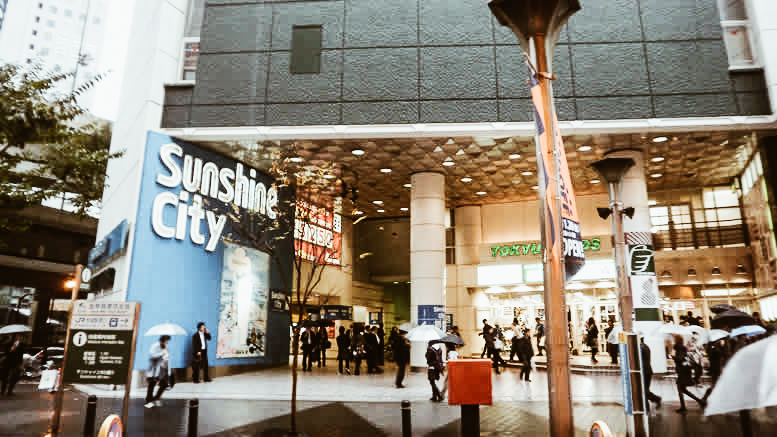
photo credits: happyjappy.com
Invece, vicino alla stazione di Ikebukuro sorge un grattacielo di 60 piani al cui interno troviamo ben due centri commerciali! A Sunshine City esistono negozi meravigliosi come
Donguri Kyowakoku, in cui è possibile trovare qualunque cosa a tema Studio Ghibli. Non dimentichiamoci poi di Dagashiya, in cui si possono acquistare dolci di ogni tipo in adorabili confezioni. HAPiNS, dove poter trovare utensili e oggetti per la casa unici e deliziosi e i peluche di Hannari Tofu e Alpacasso. Inoltre troviamo anche il Pokemon Center, il Sanrio Vivitix, Kutsushitaya, il Village Vanguard, Swimmer. Insomma, non manca di certo l’imbarazzo della scelta!
Proprio davanti l’ingresso della stazione di Ueno si trova Yamashiroya. Uno splendido negozio di 6 piani tutti da esplorare che offrono giocattoli di ogni tipo, articoli per collezionisti, action figures. Ma anche peluches di ogni genere e marca, souvenirs e tantissime gacha-machine che erogano alcuni dei gashapon più belli!
Il Creative Life: Tokyu Hands
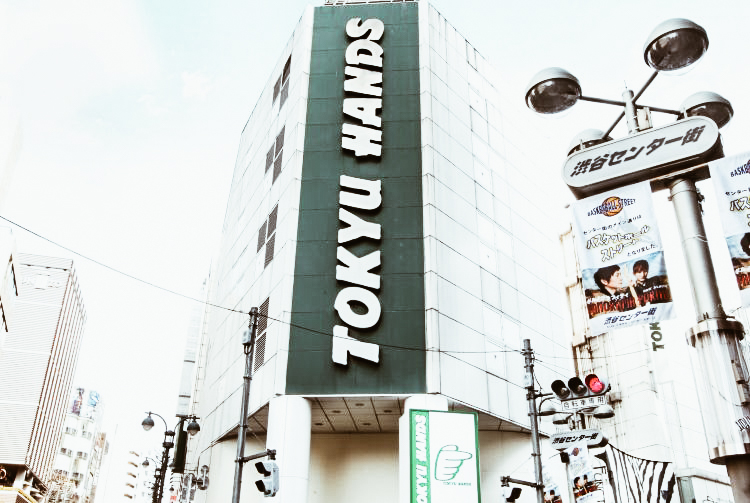
photo credits: gotokyo.org
Il Tokyu Hands ha davvero tante filiali sparse per il Giappone e qui a Tokyo sono facilmente rintracciabili ad Ikebukuro, Shibuya e Shinjuku. E’ il negozio per eccellenza dove si può trovare veramente di tutto e tutto tipicamente giapponese! Che siano articoli creativi, artistici e artigianato, oggetti per la casa, articoli di cartoleria bellissimi. Oppure valigie, pentole, mobili o attrezzi per il fai da te, Tokyu Hands è un paradiso. Questo è probabilmente il luogo per il quale io consiglierei una visita assolutamente obbligatoria!
Quali tra questi negozi vi ha colpito maggiormente? Avete già in mente una lista di cose che dovrete assolutamente acquistare una volta arrivati a Tokyo? Io credo che impazzirete e probabilmente spenderete soldi in oggetti assurdi che non avreste mai pensato di aver bisogno…. almeno fino a quel momento!








